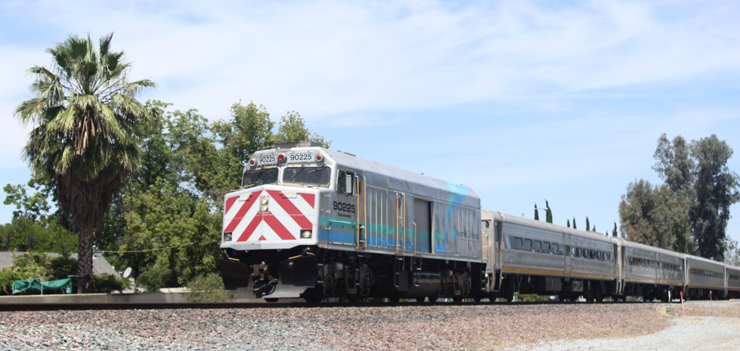
WASHINGTON — The agencies overseeing state-sponsored Amtrak trains in California have asked Congress to address the national passenger railroad’s method of charging them for operations, focusing new attention on a long-simmering dispute.
A Nov. 30 letter by San Joaquin Regional Rail Commission Executive Director Stacey Mortenson, obtained by Trains News Wire, urges “that states only be charged their ‘direct’ cost of service by Amtrak on an avoidable cost basis, similar to what made for successful state partnerships in the past.”
The letter, also signed by directors of agencies that manage the state’s Pacific Surfliner and Capitol Corridor, was addressed to the Democratic chairmen and Republican ranking members of the House Transportation and Infrastructure Committee, as well as its rail subcommittee.
In a Dec. 3 response, Amtrak President Stephen Gardner agreed “that it is time to reconsider Amtrak and the federal government’s contributions to these corridor services.” But he claimed to be “caught off-guard by your correspondence and disappointed by the tone and misleading accusations.”
Among the assertions from the California agencies are that they face challenges “in cost transparency” because “Amtrak does not follow Generally Accepted Accounting Principles (GAAP) practices and instead utilizes complex cost-allocation formulas that have limited relationship to the actual service we receive on the ground.”
Mortenson cites an Amtrak Inspector General report from August 2020, noting that at times, the agencies “have somehow seen our costs go up despite a reduction in service from Amtrak.” She also writes, “We have also had experience requesting service increases in which Amtrak’s budget numbers far exceeded the cost of actually delivering the service increase.”
Gardner’s letter acknowledges state concerns about the Amtrak Performance Tracking cost-allocation system, but says the State-Amtrak Intercity Passenger Rail Committee “is the appropriate venue to discuss these issues” rather than Congress. His response was copied to that agency, as well as the legislative leaders, Federal Railroad Administration, and California State Transportation Agency.
Gardner writes that “some states are seeking a cost per train-mile approach” as evidence of ongoing discussions, but defended the use of the allocation system since it “was developed and regularly verified by a neutral third party, DOT’s Volpe Center.” As outlined in a Trains Magazine feature, “Amtrak’s Money Mystery” [January 2019], the methodology collects company-wide expenses and redistributes them according to usage formulas, not direct costs.
The Passenger Rail Investment and Improvement Act’s Section 209 legislates this apportionment process, which is what operating authorities are objecting to [see “Is Amtrak the only state option?,” “Passenger,” April 2020 Trains] and why they have gone to Congress. Mortenson, whose organization also manages the Altamont Corridor Express commuter service that uses Herzog Transit Services as a contract operator, has been a vocal critic.
Concerns over the opaque nature of the APT system have been so pervasive that separate subcommittees of the State-Amtrak Committee have been established to dissect all of the methodology’s aspects, Chairman Rob Padgette told Trains News Wire in August. “Costs are allocated based on performance metrics and additives; it’s very hard to understand,” he says.
Amtrak’s decision to cut long-distance trains to triweekly frequencies could affect shared route costs and overhead that might be reallocated to states, who are also running fewer trains.
“Given the budgetary pressures the COVID-19 pandemic has placed on our states, transparency and a fair cost structure are more important than ever,” Mortensen concludes in her letter.
The two letters are available for download at the links below.













